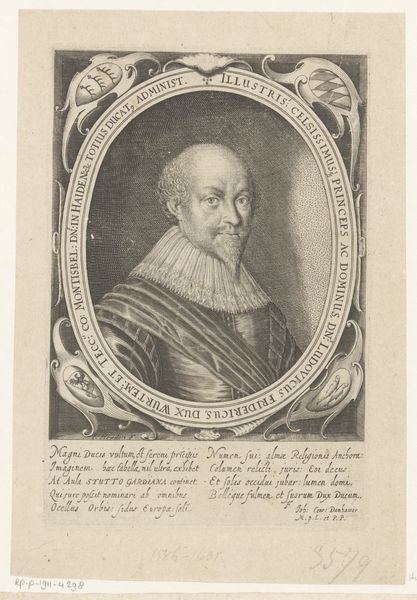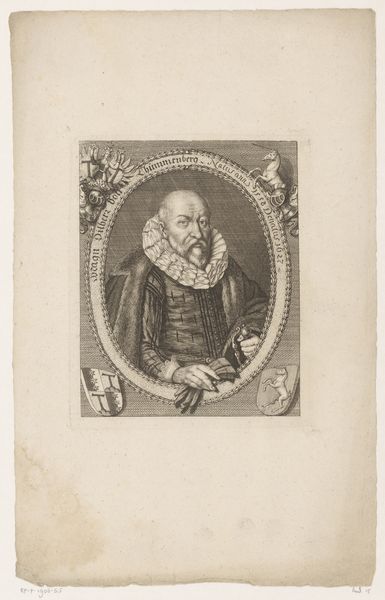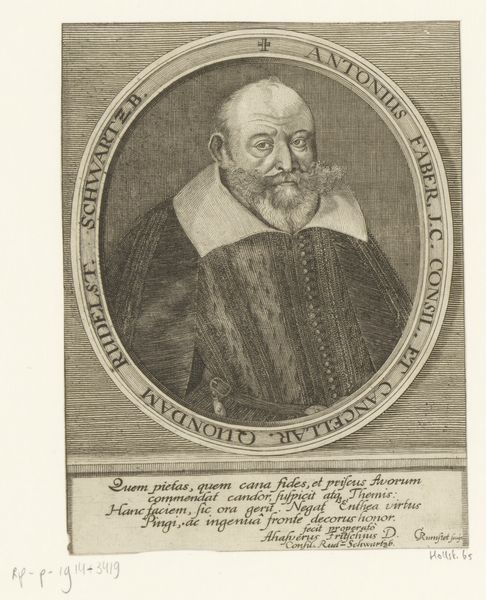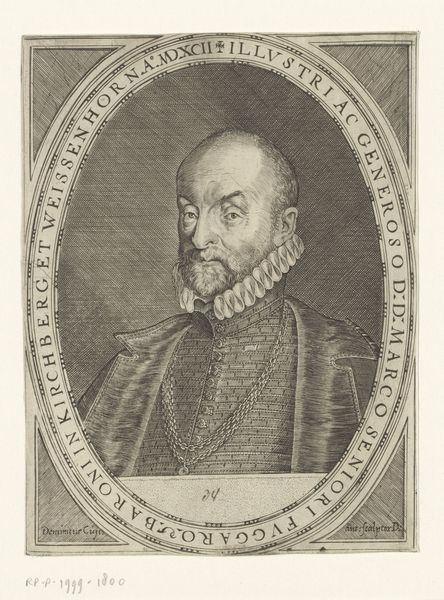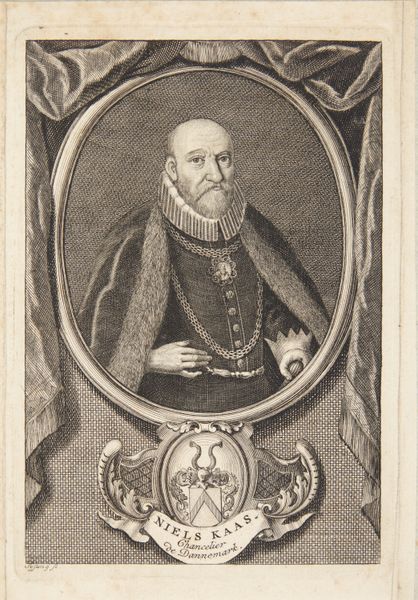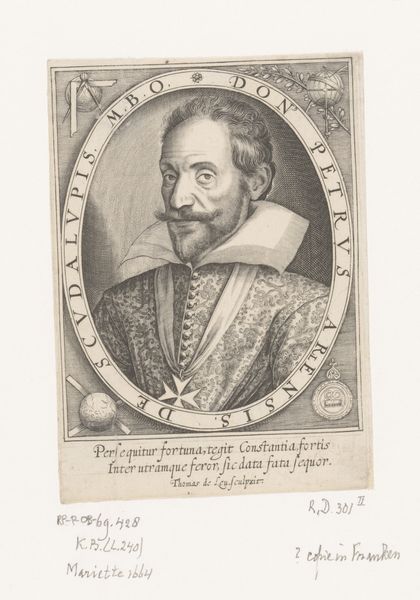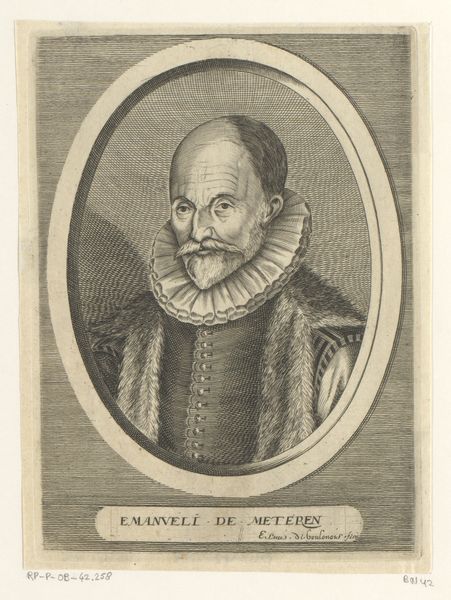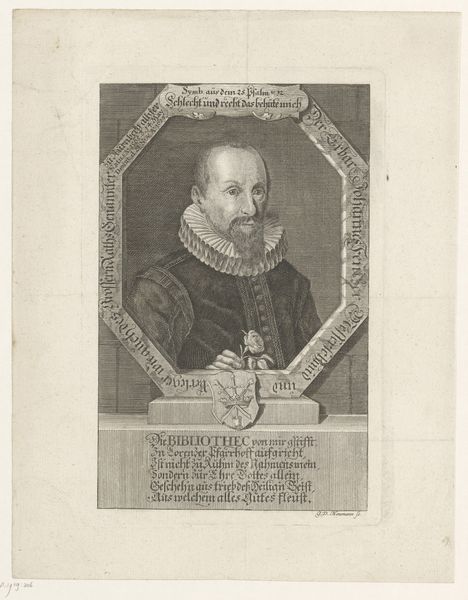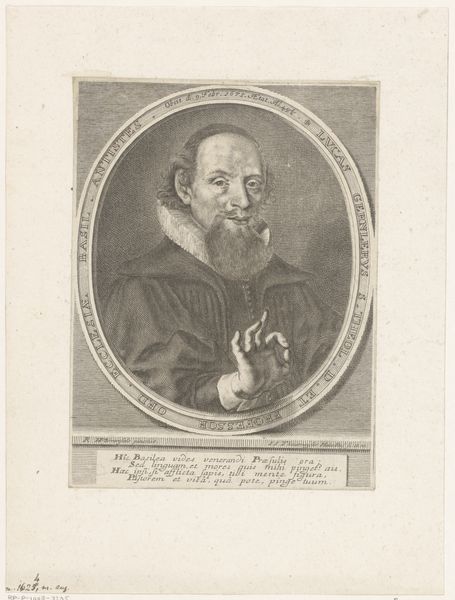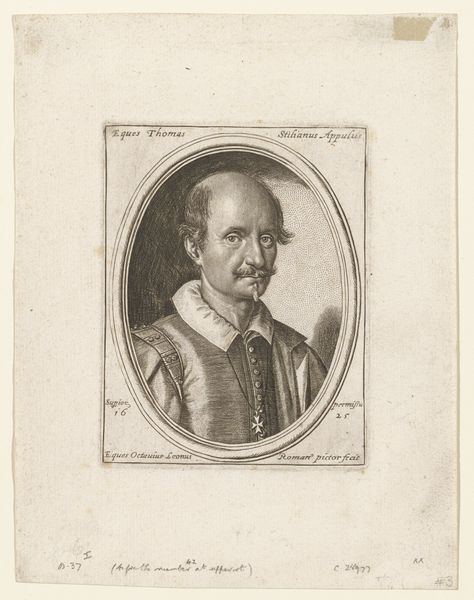
print, engraving
#
portrait
#
aged paper
#
baroque
# print
#
old engraving style
#
engraving
Dimensions: height 201 mm, width 137 mm
Copyright: Rijks Museum: Open Domain
Curator: This is "Portret van Louis de Sainte-Marthe," a print from between 1656 and 1676, crafted by Jean Frosne. The engraving portrays a stately gentleman encased within an oval frame, classic baroque styling. Editor: The first thing that strikes me is the gravity. It feels…stark, despite the ornate detailing in his attire. The stark black ink on aged paper is powerful. Curator: The engraving’s aged paper contributes to its impact, doesn’t it? You notice immediately this patina of time. Look closely, the intricate lines build up not only the form of his face and clothing but also the heraldic crest at the base of the oval. Editor: A heraldic crest implies noble lineage and a specific set of values, it appears below the subject like a family banner, suggesting the enduring significance of heritage in his identity. The collar and ornate jacket speak of his status. Is that intentional propaganda, social record or pure ego? Curator: Well, portraits in this period often served as both a display of status and as cultural memory. Remember that these images circulated among a specific social elite. Consider the symbolic power of this type of visual representation, embedding family narratives into collective visual culture. The very act of commissioning and displaying such a portrait was a declaration of identity within a network. Editor: I'm interested in how that symbolism operates publicly. Consider the positioning within an oval, what impact would its display in different setting had on a public? A gentleman presented within boundaries—conforming, respectable, knowable, even? Curator: The oval as a boundary does reinforce the sense of order and control that's characteristic of Baroque sensibilities. I’d like to suggest that the oval emphasizes individual prominence too, highlighting personal character within set social standards. The overall tone gives a somber feel which indicates how individuals grappled with notions of mortality and legacy. Editor: Legacies fashioned by cultural and institutional frameworks of that time, legacies now refracted through layers of history. It certainly triggers interesting questions for us. Curator: It does! A reminder how images constantly morph as vehicles of meaning.
Comments
No comments
Be the first to comment and join the conversation on the ultimate creative platform.
